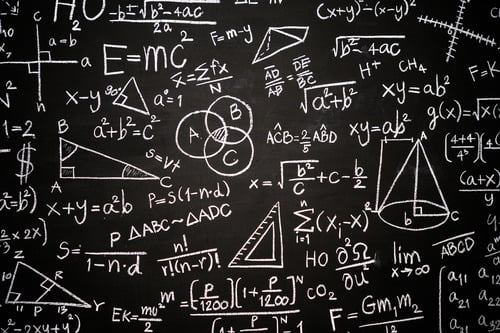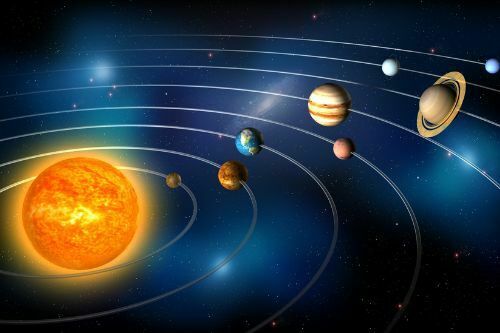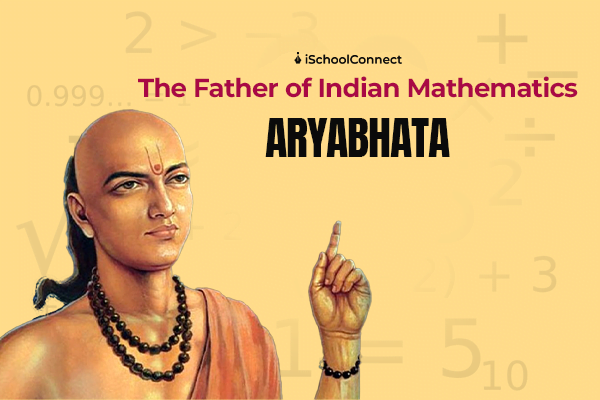Table of Contents
Aryabhata | Who was he?
Aryabhata stands as a towering figure in Indian mathematics, possibly the earliest of such luminaries. Born around 475 CE in Kusumapura (now Pataliputra) during the Gupta Dynasty, he gained fame for his profound knowledge in astronomy. His contributions spanned both mathematics and astronomy, with several of his works holding significant reverence and influence even today. While some of his writings have been lost to time, those that remain continue to inspire and inform modern researchers, cementing his legacy. Aryabhata’s pioneering efforts and discoveries have not only brought immense pride to India but also motivated countless aspiring scientists to pursue groundbreaking research.
Early life
Based on his works and influences, speculation surrounds Aryabhata’s birthplace and year. His famous book, ‘Aryabhatiya’, stated he was 23 years old, 3600 years into Kaliyug, dating back to 499 CE, which suggests his birth year as 476 CE. While ‘Aryabhatiya’ came out 3600 years into Kaliyug, the acknowledgment of Aryabhata’s contributions to the text surfaced significantly later.
Abu Rayhan al-Biruni, an esteemed Islamic mathematician who studied Aryabhata’s writings, suggested referring to Aryabhata as Aryabhata 1 or Aryabhata the Elder. He speculated that two scientists named Aryabhata existed simultaneously, causing confusion and turmoil. However, in 1926, B Datta resolved this discrepancy, clarifying that the works Al-Biruni attributed to two different scientists were actually by a single individual, Aryabhata.
Pataliputra, the capital of Kusumapura in the Gupta Empire, was a prominent learning institution and the heart of a communication network. Hence, works from all over the world readily transport to the location, allowing Aryabhata to make significant mathematical and astronomical advances. He was to be the principal of his Kusumapura school, Kulpa. Later, to continue his passion for astronomy, he proceeded to study at Nalanda University in Pataliputra, and rumors about him becoming the head of his university persisted.

Aryabhata’s inventions and discoveries
‘Aryabhatiya’ and ‘Arya-Siddhanta’ are two of the most important works by Aryabhata. In each of his publications, he investigated mathematics, astronomy, and correlation. He also discussed how mathematical equations can help you learn about the workings of the planet through astronomy.
1. Aryabhatiya
Aryabhatiya or Arya-status-ash, which translates directly as ‘Aryabhata’s 108’ since the text has 108 verses. The writings are in the form of a sutra, which is a collection of aphorisms, short statements, or scientific principles.
These poems are his works in the form of 13 introduction verses that are a means of recalling difficult computations in a simple manner. The division is into four chapters or ‘Padas’, the first of which is ‘Gitikapada’, which has 13 verses. It is about cosmology. In a ‘maha yuga’, the planetary revolutions are said to last up to 4.32 million years.
The ‘Ganitapada’ is the second ‘Pada’ or chapter. ‘Ganita’ signifies computations in Sanskrit. It comprises 33 poems, all of which are about mathematics. mensuration, simple, quadratic, and indeterminate equations, as well as arithmetic and geometric equations
The third ‘Pada’ is the ‘Kalakriya Pada’, which consists of 25 verses that tally the days, weeks, and months using different units of time. And the fourth chapter, ‘Golapada’, has 50 verses. Aryabhata goes into the causes of days and nights, the rise of zodiac signs, eclipses, the celestial equator, nodes, and the structure of the globe in this chapter.
2. Mathematical Discoveries
‘Aryabhatiya’ extensively describes Indian Mathematical Literature, investigating the Vedic method of solving mathematical problems, a technique that has endured to the present day. Algebra, arithmetic, plane trigonometry, and spherical trigonometry were all covered in detail. He adhered to the ‘Sanskrutik’ tradition or method of computation that was prominent throughout the Vedic period.
Aryabhata earned the title ‘Father Of Algebra’ due to his remarkable comprehension and explanation of planetary systems using algebra. Aryabhata successfully calculated pi’s value to two decimal places, 3.14. He also employed null coefficients and was well aware of the use of zero in such a situation. He used the Sanskritic tradition, primarily denoted by letters and alphabets, in contrast to Brahmi numbers.
3. Astronomy Discoveries

Aryabhata accurately claimed that the Earth rotates on its axis around the sun daily, causing the apparent movement of stars due to the planet’s rotation. This view contrasted the prevalent belief at the time of a rotating sky. He quantitatively defined heliocentrism as the axial rotation of planets around the sun.
His astronomical findings are broadly classified into four categories. These include a description of the solar system’s motion, eclipses, sidereal periods, and heliocentrism.
4. The motion of the solar system
Aryabhata proposed that the world revolves on its axis once a day. And the relative movement of the stars is caused by the earth’s motion. He specifies the number of earth rotations in a yuga in the opening chapter of his work, Aryabhatiyam.
Aryabhata developed a geometrical model of the solar system to explain this occurrence, wherein the moon and sun moved on epicycles – circles moving atop one another. In this model, he guided the motion of the planets using two epicycles. The little one moved slowly, but the larger one moved swiftly.
Aryabhata arranged the planets in terms of distance from Earth as follows: the Moon, Mercury, Venus, the Sun, Mars, Jupiter, Saturn, and the asterisms (group of stars). He estimated the planets’ periods and locations using the relative velocity of the points.
In the case of Venus and Mercury, they traveled around the Earth at the same rate as the Sun. However, Jupiter, Saturn, and Mars, stars or points, traveled around the Earth at a set velocity, reflecting each planet’s journey through a zodiac.
5. Eclipses
With scientific experiments, Aryabhata explained lunar and solar eclipses. He said that the planets and moonshine were created by reflected sunlight. He described eclipses as shadows falling on the Earth.
A lunar eclipse occurs when Earth blocks sunlight from reaching the moon, casting a shadow on its surface. Later, he explained the breadth and size of the Earth’s shadow before calculating the size of the eclipsed portion during an eclipse. The experiments of Aryabhata created the groundwork for Indian astronomers to refine the computations.
6. Sidereal Periods
Using current time units, Aryabhata computed the sidereal rotation (the rotation of the Earth in relation to the stars) to be 23 hours, 56 minutes, and 4.1 seconds. The present time is written as 23:56:4.091.
7. Heliocentrism
Aryabhata proposed an astronomical concept in which the Earth spins on its axis. His model also provided adjustments for estimations of the mean speeds of the planets in relation to the Sun. His calculations were based on the heliocentric concept, which states that the planets and Earth rotate around the Sun, which is at the centre of the universe.
Aryabhata described the geocentric model of the solar system, which scientifically explained solar and lunar eclipses. He also calculated the year to be 365 days 6 hours, 12 minutes, and 30 seconds, which is just 3 minutes and 20 seconds longer than today’s figures.
Death
At the age of 74, Aryabhata died a successful mathematician, astronomer, and scientist. The exact location and time of death are yet unclear. He was thought to have lived the majority of his life at Kusumapura, Pataliputra.
Aryabhata’s works and legacy
Aryabhata’s legacy is genuinely unparalleled, and no one has ever been able to recreate his key achievements at a world-class level that are still relevant today. His forward-thinking approach was outstanding.
Legacy
Aryabhata significantly influenced Indian astrology and other civilizations with his work. Other astronomers benefited from translations of his studies, investigations, and calculations into several languages. His work was particularly influential during the Islamic Golden Age, with Arabian translations standing out. Prominent Arabian mathematicians like Al-Biruni and Al-Khawarizmi referenced his findings, particularly his theory of the Earth rotating on its axis.
Trigonometry was born from Aryabhata’s concepts of cosine, sine, inverse sine, and verse sine He was one of the first mathematicians to calculate sine and versine (1-cosx) tables from 0 to 90 degrees in the 3.75-degree range to four decimal places.
Aryabhata introduced the Sanskrit terms ‘Jya’ and ‘Kojya,’ from which the contemporary names for the trigonometric functions sine and cosine derive. Other astronomers also highly favored his astronomical calculating skills, frequently employing them to develop Arabic astrological tables known as ‘zijes.’
Additionally, Aryabhata’s calendrical calculations laid the groundwork for the Hindu calendar ‘Panchgram’ in India. A group of Islamic scientists later used this foundation to present the Islamic calendar ‘Jalali’ in 1073 CE. Afghanistan and Iran continue to use modified versions of this calendar.
Additionally, the Bihar government founded Aryabhata Knowledge University to foster astronomical knowledge among interested students to recognize Aryabhata for his contributions.
Key Takeaways
- A scientist’s contributions have never been the same since Aryabhata. He brought India to the world’s attention in terms of scientific knowledge and worth that made a difference around the globe.
- Aryabhata was one of the rare scientists who performed unusual duties throughout their life. India appreciates his contributions.
- The Islamic world greatly admired Aryabhata’s work, particularly his astronomical findings. Translators rendered these works into Arabic in the eighth century. As a tribute, India named its first satellite launched into orbit after him.
- He was the first Indian mathematician and astronomer during the classical period. Being able to estimate and approximate his discoveries at the time, in the absence of modern technology, was astonishing.
We hope this blog post was interesting and informative. If you have any doubts, you can reach us here.
You can also share your thoughts by leaving a comment below.
Liked this blog? Read next: 10 great mathematicians of India
FAQs
Q1. Was Aryabhata the inventor of the number zero?
Answer– Aryabhata’s writings were closely observed by a French mathematician, Georges Ifrah, who maintained that Aryabhata implicitly utilized zero in lieu of null coefficients, but because he followed Sanskrit tradition, which only comprised letters and alphabets, he specified alphabets and a dot in place of zero. So he was well aware of a number like zero, which may exist as a unit, in the tens place, and is most commonly employed in the decimal place.
Q2. What exactly is Arya-Siddhanta?
Answer– Arya-Siddhanta is Aryabhata’s lost work on astronomical calculations. It is known via the writings of his contemporaries Varahmihira and later commentators and mathematicians, such as Bhaskara 1 and Brahmagupta. This theory appears to be based on Shaurya Siddhanta and employs midday-night calculations as opposed to dawn calculations in Aryabhatiya. This thesis also discusses astronomical tools such as the gnomon, angle measuring devices, shadow instruments, semicircular and circular sticks, and cylindrical sticks.
Q3. What was Aryabhata’s contribution to trigonometry?
Answer– Aryabhata created the book Aryabhatiya. Ganitapada is a portion in this book where he provides the area of the triangle for trigonometric calculations. He asserted that the area of a triangle is equal to the product of half of its side and its perpendicular. He also addressed trigonometric functions like sine and cosine in this book.
When his thesis was translated into Arabic, the Arabic translators referred to sine as jobs. Later, the term jiba was shortened to sinus, which means ‘bay’ or ‘cove’ in Latin. As a result, this was translated into English as ‘sine.’







